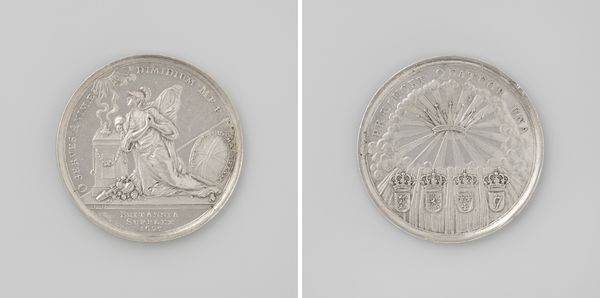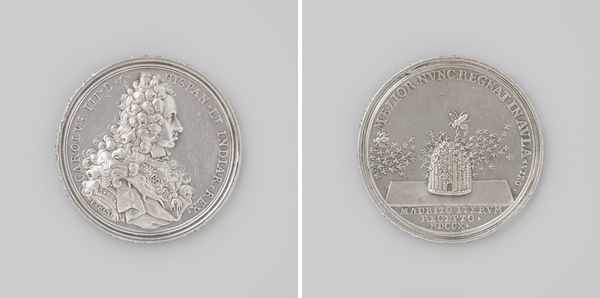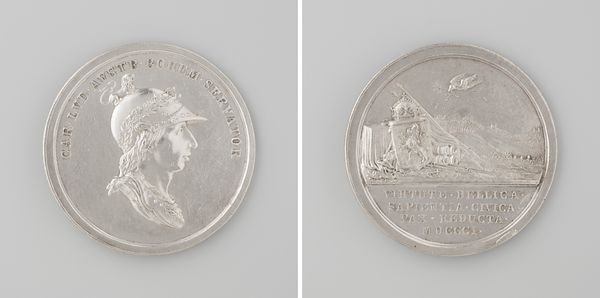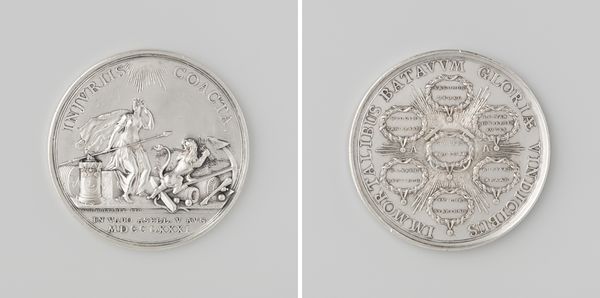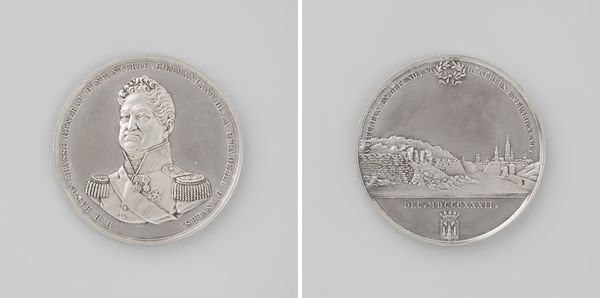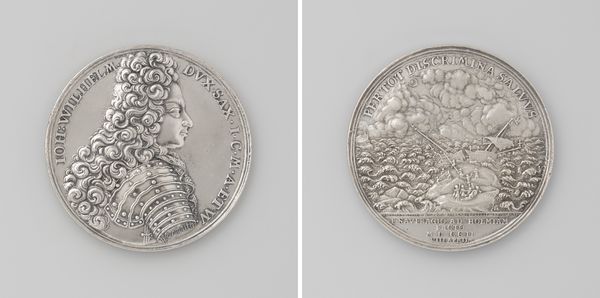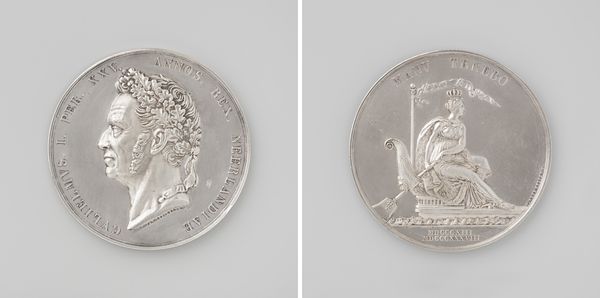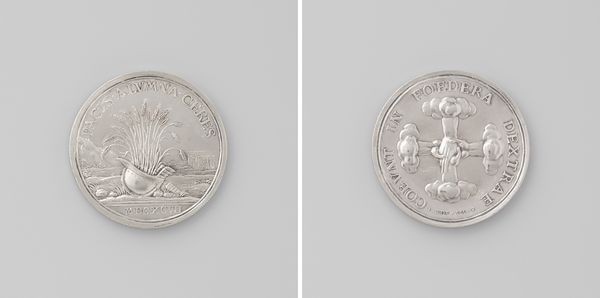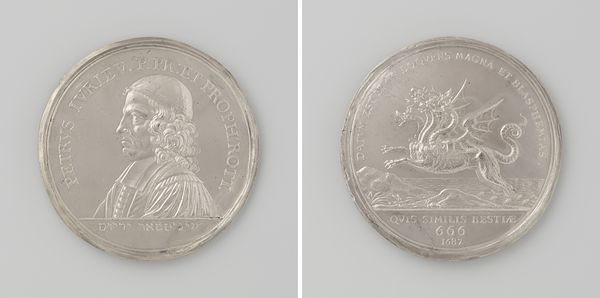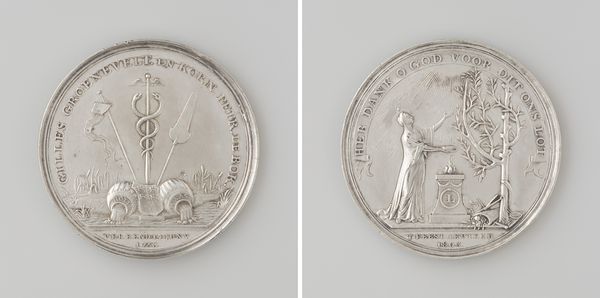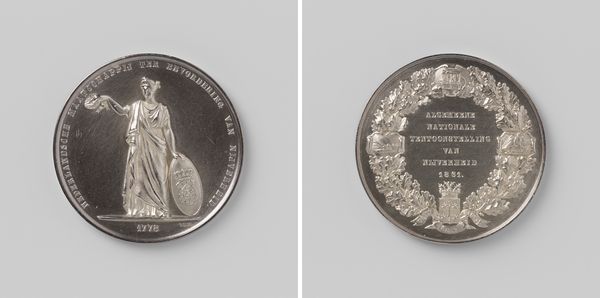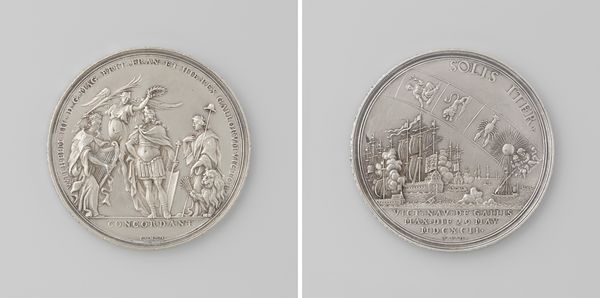
Overwinning van Ferdinand van Brunswijk-Wolfenbuttel op de Fransen bij Minden 1759
0:00
0:00
print, metal, relief, engraving
#
neoclacissism
# print
#
metal
#
relief
#
history-painting
#
engraving
Dimensions: diameter 4.9 cm, weight 39.53 gr
Copyright: Rijks Museum: Open Domain
Editor: Here we have a silver medal from 1759, titled "Victory of Ferdinand of Brunswick-Wolfenbuttel over the French at Minden," made by Johan George Holtzhey. It depicts scenes from this battle. The coin is relatively small and quite detailed. How would you interpret this work, considering its purpose as a commemorative object? Curator: What's striking is how this metal object, created through labor-intensive processes like engraving, becomes a vehicle for commemorating and solidifying power. We see not just an image, but a manufactured representation of victory circulated within a specific social context. What can the imagery and Latin inscription on this object tell us about labor during its time? Editor: The figure in the foreground seems to represent military might. The reverse side shows what seems to be symbolic of renewal after conflict. Curator: Exactly. Consider the material value itself: the use of silver implies wealth and prestige and elevates this victory beyond the everyday. Think of the work that went into mining the metal, refining it, and then the artisan's skill in crafting this intricate design. Editor: So the value isn't just in the image it presents, but in the social implications of the material used to produce the piece? Curator: Precisely! The medal operates within a system of patronage, commemorating the victory but also reinforcing social hierarchies. This also shows how artistry was funded, what kinds of statement those actions made, and the kind of skills artists cultivated to perform their trades. How can it alter our perspective on war if we analyze war efforts through objects such as these? Editor: It definitely brings the material reality of the war to the fore, transforming something destructive into something refined and lasting. I hadn't thought of that before. Curator: Right? Material analysis helps us reveal the embedded ideologies within seemingly straightforward objects and opens the discussion of consumption, labor, and value. Editor: I will think of the labor when appreciating artwork from now on, thank you.
Comments
No comments
Be the first to comment and join the conversation on the ultimate creative platform.
